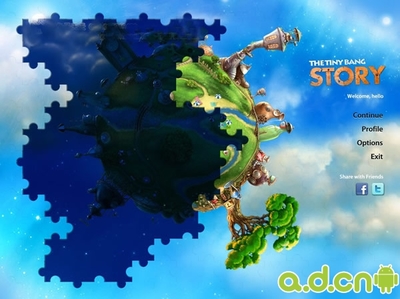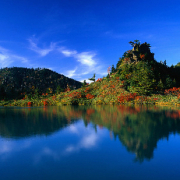在我们太阳系外29光年处的一颗红矮星再次显示了可能拥有首颗适宜移居行星。
这颗行星叫做Gliese 581d,在一个在宜居带的外延公转,表面可能存在液态水。
一篇来自天体物理学通讯杂志的文章表示,该行星的的大气有可能保证维持适宜的温度保证水的存在。
这个星系还存在另外一颗行星可能存在宜居环境,这颗行星名叫Gliese 581g发现于2010年,行星具体条件尚未确定。
然而,该行星是否真实存在却成为了关注焦点。
关于Gliese 581d存在的争议比较少,它是与一颗叫做Gliese581c的行星在2007年一同被发现的,它们依次占据着宜居带的内沿与外沿轨道。
很快,Gliese 581c就被确定由于其太过接近主星从而无法保证存在液态水,该行星表面温度可能超过1000℃。
通过下一代的望远镜,我们有可能能够直接在Gliese 581d上探索生命。

相反的,由于该行星质量大约地球的6倍而体积是地球的2倍,行星581d的表面刚开始被认为温度太低以至于无法存在液态水。
现在,法国的研究人员通过在计算机上模拟行星的大气,推断出大气中可能含有浓度极高的二氧化碳。
他们认为这种环境可能存在液态水的海洋,同时还会有云层和降水。
然而,Gliese 581d浓密的大气和来自其主星暮红色的光有可能形成对人类有毒性的浑浊的大气。
Robin Wordsworth,一名来自巴黎Pierre SimonLaplace研究所的会员表示,该发现进一步证明地外行星的环境会和我们熟悉的太阳系内的行星环境完全不同。
Wordsworth博士说,模拟的结果无异于第一次确定的发现移居的地外行星。
“这项发现非常重要,因为这时候此大气环境模拟学者们证明这颗行星是潜在的移居行星,而且所有的天文观察员都确认这颗地外行星的存在。”他对PA的新闻机构说。
“Gliese 星系的发现让我们非常激动,因为相对而言它离地球非常近,我们将能够直接在Gliese581d上搜寻生命。”
French scientists have confirmed with computer models thatGliese 581d, a planet orbiting a red dwarf star about 20 lightyears from here, has a stable atmosphere, comfortable temperatures,and a surface covered in liquid water. It's the first planetorbiting another star that could definitely support life, and it'sbasically next door.
While Gliese 581d is too small and far away to observe directly,we can infer some things about it from the gravitational effectsthat it has on its parent star and fellow planets. We know thatGliese 581d is about twice the size of Earth (and six times themass), we know that it's rocky (not a gas giant like Jupiter orSaturn). This means that it's large enough and dense enough to beable to hold on to a substantial atmosphere. We can also estimateabout how much energy Gliese 581d receives from its red dwarf star,and based on all of this information, French scientists have beenable to model a range of potential climates showing that "GJ581dwill have a stable atmosphere and surface liquid water for a widerange of plausible cases."
"Will have" is a pretty strong language when you're talkingabout a planet some 117,569,996 million miles away, but based onthe models, it sounds like it's a sure thing. That's not to say itwould necessarily be a pleasant place to live, though. Gliese 581dprobably depends on a significant greenhouse effect to keep itselfwarm since it gets relatively little energy from its star. Theatmosphere is mostly CO2, and while you'd get clouds and warm rainand oceans and stuff, the surface itself would be "in a perpetualmurky red twilight." The planet also may be tidally locked (meaningthat one side perpetually faces its sun), and at double Earth'sgravity, it's not exactly a vacation spot.
Despite all this, it would be an ideal place to find someextraterrestrial plant life, and where there are plants there mightbe animals, specifically animals which have adapted to highgravity, low light, low oxygen environment. So think small and lowto the ground with big eyes. And of course, there's lots ofpotential for animal life in warm oceans, too.
While 20 light years is extremely close on the galactic scale,using current technology it would still take us humans about300,000 years to reach the Gliese system. A better bet, at leastfor now, might be to just send an interstellar probe, which mightbe able to reach Gliese 581d in just a century or two.
 爱华网
爱华网



